9 Reasons Why, for Modern Tape, It’s a New Game with New Rules

Fred Moore of Horison Information Strategies, a long-time storage industry expert and consultant, recently published a 2024 update of his report entitled “Tape. New Game. New Rules”.
This updated report provides a focus on how modern magnetic data tape is solving for IT challenges including runaway data growth, economic pressure, sustainability issues, cybercrime and the reliability that’s needed for the long term preservation of data. And that data that has also grown dramatically in value as we learn to analyze it and derive competitive advantage from it.
Below are 9 reasons why today’s modern tape systems represent a new game with new rules. Taken together, they make a compelling case for many to revisit the rich value proposition that tape has to offer now and well into the future.
LTO Ecosystem Extends Roadmap
In 2022, the LTO Program Technology Provider Companies (TPCs), HPE, IBM and Quantum Corporation, announced an updated LTO technology roadmap that extends the LTO Ultrium standard through 14 generations. The roadmap calls for tape capacities to double with each new generation, with LTO-14 delivering up to 1,440 TB (1.44 PB compressed) per tape. The new LTO roadmap extension is more relevant than ever and at this point no other storage technologies have revealed a comparable multi-generational roadmap.
LTO-9 Adds Capacity and Features
LTO-9 is the latest LTO generation bringing new functionality to tape including higher capacity, data rate, access time and reliability improvements. LTO-9 increased the native cartridge capacity of LTO-8 by 50% to 18 TB (45 TB compressed) and increased drive throughput (11%) up to 400 MB/sec enabling a single LTO-9 drive to write up to 1.44 TB/hour. A new feature for the LTO family with LTO-9, oRAO (Open Recommended Access Order) reduces initial file access times to first byte of data by as much as 73%.
Record Capacity Achieved with TS1170 Tape Storage System
2023 marked the debut of a new ultra-high-density tape drive with a native storage capacity of 50 TB in a single cartridge and capacities up to 150 TB per cartridge with 3:1 compression. The IBM TS1170 storage system represents the world’s highest cartridge capacity ever announced and enables data intensive secondary storage applications including AI, big data, archiving, cloud computing, and analytics to significantly reduce their total cost of ownership.
Further Improvements Made in Tape Media Longevity
In 2019, Fujifilm and JEITA (Japan Electronics and Information Technology Industries Association) officially confirmed the longevity of Barium Ferrite magnetic signal strength to be stable for at least 50 years based on studies of LTO-7 tapes. Prior to this confirmation, the number of years for LTO tape longevity had been rated up to 30 years.
Tape Leads Reliability Ratings
Since LTO-1 first came to market in 2000 with a native capacity of 100 GB, the capacity of LTO cartridges has increased by 180 times and data rates have increased by 20 times. Over the same period, the specified uncorrectable Bit Error Rate (BER) of LTO cartridges has improved by a factor of 1000, three orders of magnitude improvement. LTO-9 provides an industry leading uncorrectable bit error rate of 1×1020 compared to the highest HDD BER at 1×1017. A BER of 1×1020 corresponds to one unrecoverable read error event for every 12.5 exabytes of data read. Today, both the latest LTO and enterprise tape products are more reliable than any HDD (or SSD).
Tape Reduces CO2, eWaste and TCO
Moore cites key stats from Improving Information Technology Sustainability with Modern Tape Storage, a research paper issued by Brad John’s Consulting that compared an all data on HDD solution to an all-tape solution and to an active archive that moved 60% of the HDD resident (low activity) data to tape. Moving 60% of HDD data to tape for 10 years reduced carbon emissions by 58% and electronic waste was reduced by 53%. Moving 60% of HDD data to tape, results in a 46% TCO savings. Moving all data to tape results in a 78% cost reduction.
Tape Air-Gap Thwarts Cybercrime
The tape air gap, inherent with tape technology, has ignited significant interest in storing data on air-gapped tape. The “tape air gap” means that there is no electronic connection to the data stored on a removeable tape cartridge therefore preventing a malware attack on stored data. HDD and SSD systems remaining online 7x24x365 are always vulnerable to a cybercrime attack.
Data Protection Strategies Evolving with Tape
Using tape to backup HDDs was the original data protection strategy, but having one backup copy is no longer sufficient. The widely accepted and genetically diverse 3-2-1-1 Backup Strategy states that enterprises should have three copies of backup data on two different media types, one copy offsite and one air gap copy. Combining the tape air gap copy with available tape drive encryption and available WORM (Write Once Read Many) tape strengthens any data center cyber resiliency strategy.
Active Archive Leverages Tape
As the amount of secondary storage data soars, new technology tiers are emerging in secondary storage including the Active Archive, Traditional Archive and Deep Archive to address many new use cases. Many data management products now support tape as an object storage target using S3 services. Combining the open tape file system LTFS with tape partitioning, data mover software (HSM, etc.), an HDD array or NAS in front of a tape library creates an active archive.
In Conclusion
At least 80% of the world’s digital data is optimally suited to reside on secondary storage and this amount could reach nearly 7 ZBs by 2025. In response to this, the tape ecosystem has significantly expanded its capabilities in recent years. Tape has also become the leading pure storage solution to defend against cybercrime by seamlessly integrating air gap, encryption and WORM capabilities. Roadmaps signal that the trend of steady tape innovation will continue well into the future. Tape is the greenest storage technology and can significantly reduce carbon emissions and eWaste from data center operations. More large-scale tier 2 data centers are determined to contain their infrastructure costs and improve their sustainability metrics. They will be motivated to rethink existing data storage practices and take advantage of advanced magnetic tape as they approach exabyte scale. Combined with improved access times, faster data rates, a 50-year media life, lowest TCO and the highest device reliability, modern tape has the greatest potential to address the massive capacity demands of the zettabyte era.
To read the full report:

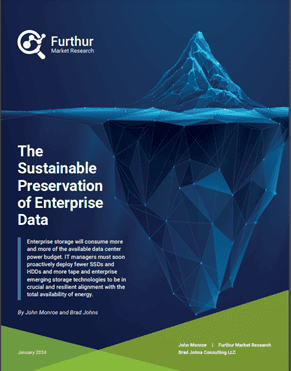
 Storage industry analysts are saying that 2023 will be remembered for its historic downturn in demand. This may be so, due to hyperscaler digestion of previous year’s capacity shipments. But a few things remain constant, such as the
Storage industry analysts are saying that 2023 will be remembered for its historic downturn in demand. This may be so, due to hyperscaler digestion of previous year’s capacity shipments. But a few things remain constant, such as the 
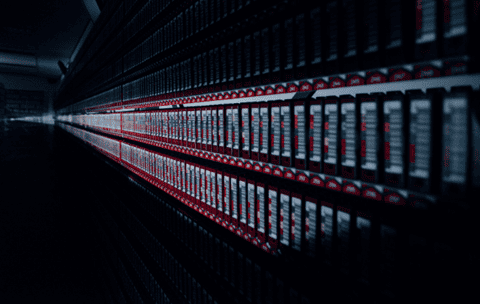 I recently had the opportunity to visit a very unique data tape vault run by
I recently had the opportunity to visit a very unique data tape vault run by 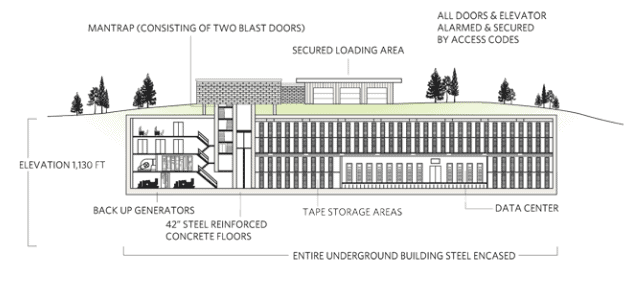
 Truth be told, this was not my first visit to VRI Roxbury. I had toured the facility some 20 years earlier while working for another data tape manufacturer. And while the facility has kept up with modern innovations such as security protocols including iris scans, temperature and humidity monitoring, hi-def video surveillance, new and improved inventory management techniques, it still essentially provides the same services today that it did 20 years ago. However, given several critical market dynamics, these services are more relevant today than ever before.
Truth be told, this was not my first visit to VRI Roxbury. I had toured the facility some 20 years earlier while working for another data tape manufacturer. And while the facility has kept up with modern innovations such as security protocols including iris scans, temperature and humidity monitoring, hi-def video surveillance, new and improved inventory management techniques, it still essentially provides the same services today that it did 20 years ago. However, given several critical market dynamics, these services are more relevant today than ever before. At least for now, climate change is getting worse. We actually had the hottest days on Earth this July with a record global average of 62.92 degrees Fahrenheit. That does not sound that hot but it’s an average including summer in the northern hemisphere and winter in the southern hemisphere. These were the hottest days since 1979 at least, and broke records previously set in 2016 of 62.46 degrees F.
At least for now, climate change is getting worse. We actually had the hottest days on Earth this July with a record global average of 62.92 degrees Fahrenheit. That does not sound that hot but it’s an average including summer in the northern hemisphere and winter in the southern hemisphere. These were the hottest days since 1979 at least, and broke records previously set in 2016 of 62.46 degrees F.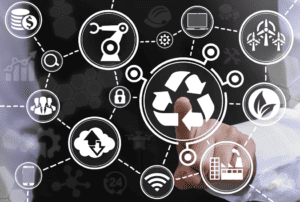 Recently I had the opportunity to meet with a newly appointed Chief Sustainability Officer (CSO) at a major scientific research organization. In this new position that seems to be trending across many industries, this CSO has been tasked with the overall responsibility for understanding the organization’s energy profile and how its carbon footprint is spread across its many different departments and then to figure out what actions can be taken to help achieve its carbon reduction goals. With this understanding in place, the CSO will proceed to put downward pressure on the department heads to make meaningful change.
Recently I had the opportunity to meet with a newly appointed Chief Sustainability Officer (CSO) at a major scientific research organization. In this new position that seems to be trending across many industries, this CSO has been tasked with the overall responsibility for understanding the organization’s energy profile and how its carbon footprint is spread across its many different departments and then to figure out what actions can be taken to help achieve its carbon reduction goals. With this understanding in place, the CSO will proceed to put downward pressure on the department heads to make meaningful change.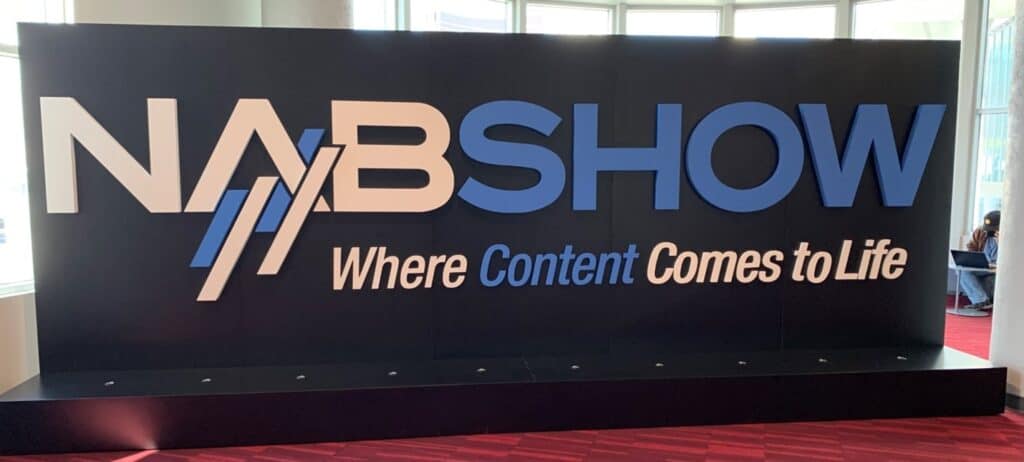 The National Association of Broadcasters (NAB) held their annual conference this week in Las Vegas. Some 68,000 attendees from broadcasters to screenwriters, advertisers and streamers, to producers and filmmakers were eager to learn about the latest in media and entertainment technology. Some 1,200 exhibitors set up shop in the Las Vegas convention center, including FUJIFILM with our FUJINON lenses, and Recording Media in the form of LTO tape technology.
The National Association of Broadcasters (NAB) held their annual conference this week in Las Vegas. Some 68,000 attendees from broadcasters to screenwriters, advertisers and streamers, to producers and filmmakers were eager to learn about the latest in media and entertainment technology. Some 1,200 exhibitors set up shop in the Las Vegas convention center, including FUJIFILM with our FUJINON lenses, and Recording Media in the form of LTO tape technology.
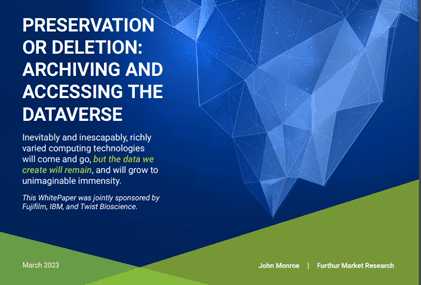 John Monroe, a long-time storage industry expert and Gartner analyst, now an independent consultant with his own company (Furthur Market Research), recently published a new report entitled “Preservation or Deletion: Archiving and Accessing the Dataverse”. This report is a follow-up to John’s initial report entitled “The Escalating Challenge of Preserving Enterprise Data”, and is co-sponsored by Fujifilm, IBM and Twist Bioscience. This new report looks at likely growth rates of new enterprise capacity shipments required to store the ever-expanding “dataverse” and manage the swelling installed base of enterprise-grade SSD, HDD and tape media from 2023 to 2030. The findings and conclusions in John’s report clearly suggest that the status quo in storage strategies is not sustainable. Below are some summaries and excerpts taken from the report and a link is provided to view/download the full report.
John Monroe, a long-time storage industry expert and Gartner analyst, now an independent consultant with his own company (Furthur Market Research), recently published a new report entitled “Preservation or Deletion: Archiving and Accessing the Dataverse”. This report is a follow-up to John’s initial report entitled “The Escalating Challenge of Preserving Enterprise Data”, and is co-sponsored by Fujifilm, IBM and Twist Bioscience. This new report looks at likely growth rates of new enterprise capacity shipments required to store the ever-expanding “dataverse” and manage the swelling installed base of enterprise-grade SSD, HDD and tape media from 2023 to 2030. The findings and conclusions in John’s report clearly suggest that the status quo in storage strategies is not sustainable. Below are some summaries and excerpts taken from the report and a link is provided to view/download the full report.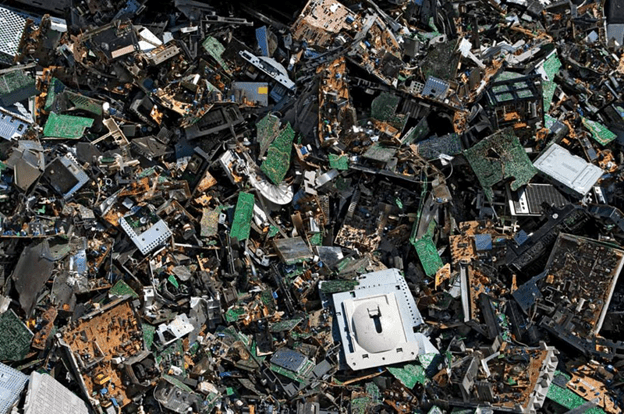 A new white paper written by Dr. Shawn Brume of IBM entitled Reducing Risk and CO2e in the Disposition of IBM Physical Tape Media does a great job in answering what to do with tape media at end-of-life (EOL).
A new white paper written by Dr. Shawn Brume of IBM entitled Reducing Risk and CO2e in the Disposition of IBM Physical Tape Media does a great job in answering what to do with tape media at end-of-life (EOL).